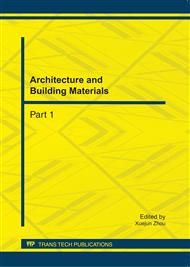p.561
p.565
p.569
p.573
p.577
p.582
p.587
p.591
p.596
Low Carbon-Oriented Methords for Urban Plan Based on Ecological Technologies
Abstract:
It was the research on spatial pattern that received most attention in traditional theories of urban plan. The majority of city practical consequences were expressed in the form of illustration by qualitative analysis, and lack of data supporting by quantitative analysis. The authors study this research by the methods of calculating the relevant datum and comparative analysis; introduce ecological rationales into the urban plan, and put forward three quantitative strategies: First, the authors investigate the coupling relationship between the city spatial pattern and carbon emissions by “Ecological Footprint” and clarify how some typical city spatial patterns effect carbon emissions; Second the authors designate the ecological sensitive area by GIS, establish the city carbon sink system, identify the landscape structure; At last, in order to modulate and optimize the industry distribution, the authors hunt for the limiting factors which restrict the development of industry by “Bottleneck Index”. In responds to this situation, introducing ecological and low carbon technologies into the urban plan may open up a new orientation to provide the theoretical references. Furthermore, some obscure intensions put forward by experience can be translated into digital technical specification which is available for practical operation.
Info:
Periodical:
Pages:
577-581
Citation:
Online since:
September 2011
Authors:
Price:
Сopyright:
© 2011 Trans Tech Publications Ltd. All Rights Reserved
Share:
Citation:


